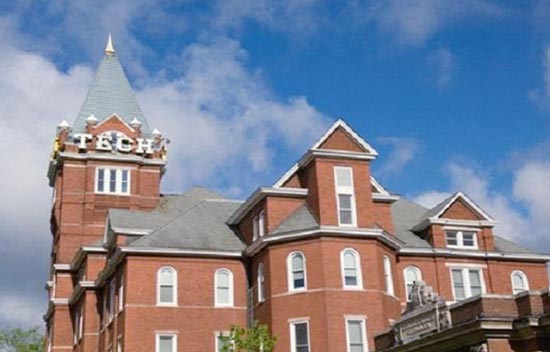
1、Literature review for cerebrospinal fluid flow simulation and modeling
Keyword: literature review, computational fluid simulation and modeling (CFD), cerebrospinal fluid (CSF)
Recommendation: this is a project designed for the students who have fluid dynamics background. Any student who is interested in application of computational bio-fluid dynamics and soft matter mechanics, will be warmly welcome.
Introduction:
A brain or spinal cord tumor obstructs cerebrospinal fluid (CSF) flow, which results in the accumulation of CSF and increased intracranial pressure (ICP).i Even though the growing brain tumor is located in an area apart from the spinal cord, it presses against surrounding areas,
inducing brain swelling or edema either in specific locations or throughout the brain. ii The swelling part causes decreases of cerebral perfusion pressure (CPP) associated with the increases of ICP. The CSF serves as a critical point in cerebral autoregulation and cerebral blood flow (CBF). In analogy, dynamics of flow in the CSF system appear to be important in a number of CSF-related
2、Computational modeling of Red Blood Cell in splenic filtration
Keyword: Red Blood Cell, biomechanics, computational modeling and simulation
Recommendation: this project suitable for students who have strong background on numerical programming.
Introduction:
spleen is the largest secondary immune organ in the human body and it consists of two functionally distinct compartments, the white pulp and the red pulp. The white pulp is responsible for initiating immune reactions to blood-borne antigens, whereas the red pulp serves as a primary blood filter to sequester and remove pathogenic microorganisms as well as the senescent or diseased red blood cells (RBCs) from circulation. Blood within the spleen follows two parallel microcirculatory pathways, namely “open” and “closed” circulations.
Approximately 90% of blood entering the spleen is directed into the “closed” circulation, and the rest is diverged to the “open” circulation. RBCs traveling through the “closed” circulation move from the splenic artery to the perifollicular zone (PFZ) and then through PFZ-to-sinus bypasses, sinus lumens, post-sinus venues, and eventually converge in the splenic vein.
麻省理工学院(Massachusetts Institute of Technology, MIT),创立于1861年,坐落于美国马萨诸塞州剑桥市(大波士顿地区),是世界著名私立研究型大学。作为世界顶尖高校,麻省理工学院(MIT)尤其以自然及工程学享誉世界,位列2015-16年世界大学学术排名(ARWU)工程学世界第1.计算机科学第2.与斯坦福大学、加州大学伯克利分校一同被称为工程科技界的学术领袖。截止2016年,麻省理工共走出了19位图灵奖(计算机界最高奖)得主;先后有87位诺贝尔奖得主在麻省理工学院工作或学习过。
面向对象:欲申请美国名校生命科学等生物、化学、生物力学相关专业的大学生、优秀的高中生。
科研时间:寒假,暑假,具体根据学生面试情况由科研组进行调整。面试前需要阅读科研组提供的一篇专业论文。
科研性质和目的:生命科学课程旨在培养学生对于生命科学领域的基本认知以及对学科前沿的了解,旨在通过讲解生命科学领域的前沿研究以及学科未来发展方向,培养学生对于生命科学领域的兴趣。通过例子讲述的方式,使学生体会到技术革新如何对于生命科学产生推进作用,生命科学学科中的基本科学发现如何逐步转化为临床的应用,使学生对于以生命科学为基础健康产业的有着较为系统的认识。通过定量生物学和系统生物学内容的引入,使学生对于生物学的新发展趋势有着更准确的认识。
科研完成时,学生将了解麻省理工学院的授课方式及培养流程,并对生化相关专业有一个完整的认知,形成专业概念,为后续专业课程的学习奠定基础。同时,在此基础上,培养从事前沿领域的研究和实际科研项目研究工作的能力,具备基本的科研素质、撰写一定质量的学术论文和在导师的指导下进行比较简单科研项目的开展能力,为专业选择及后续专业课程的学习和研究奠定基础,对学生自己未来的职业发展有着十分重要的意义。
1.挑战自身潜能,切身体会世界理工之最——麻省理工学院严苛的学术氛围。通过参加2~4周紧张而丰富的科研,学生能亲身体会国际精英们在这样的学术氛围下如何完成自身成长;
2.极大拓宽学生视野。麻省理工学院(MIT)作为世界顶尖高校,尤其以自然及工程学享誉世界。处在这样一个学习氛围下,能够让学生拥有国际视野,了解到世界顶尖的发展行业在研究的课题和内容以及世界最新发展态势,从而对整个行业有更清晰的认知;
3.学生将有机会聆听世界一流规划师、设计师的讲座,获取该产业第一手现实资料;
4.学生将会了解生物化学如何做科学研究,对美国学术环境有深入的接触;
5.学生能够为将来的赴美留学打下基础,并且能够根据自身情况对未来有更清晰的规划;在面临人生选择和确定发展方向的十字路口,这一段经历将会成为学生十分宝贵的财富。
免费
通话

4000-970-969

输入您的电话号码,点击通话,稍后您将接到我们的电话,该通话对您完全免费,请放心接听!
╳4000-970-969

输入您的电话号码,点击通话,稍后您将接到我们的电话,该通话对您完全免费,请放心接听!
╳关注小满留学公众号,实时
分享留学攻略!
以上数据仅作参考,个人根据所选学校不同、所在地区不同、个人消费习惯不同,会有所出入,详情需询问您的专属顾问老师。
